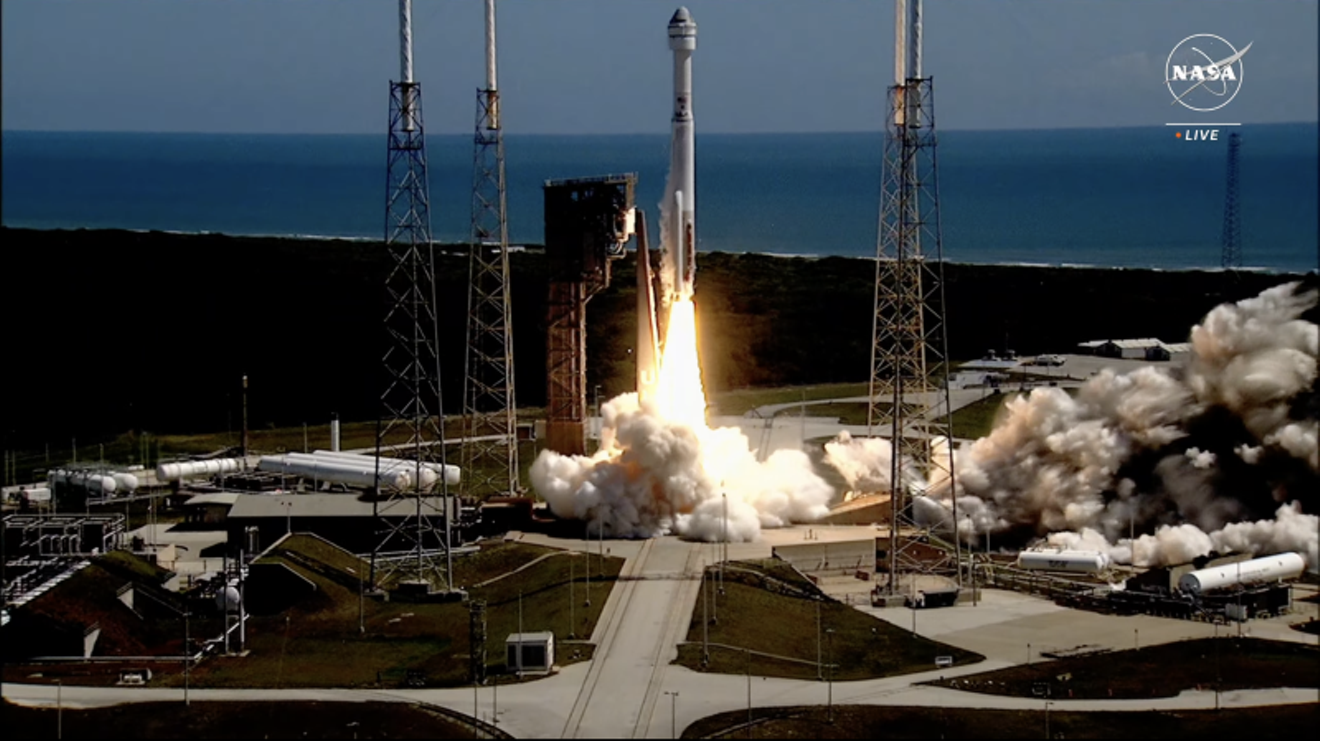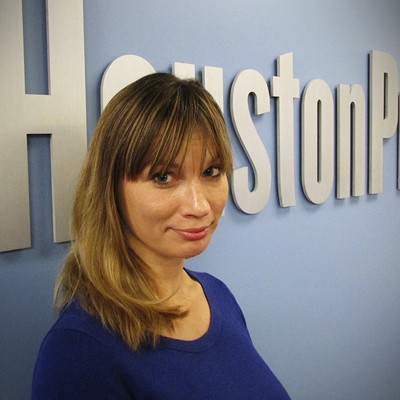Nothing went wrong this time.
After years of delays, malfunctions, and two previous scrubbed attempts in the past month, on Wednesday morning Boeing’s CST-100 Starliner finally launched its crewed test flight from Cape Canaveral Space Force Station in Florida.
In the hours before liftoff, there was an almost casual feel to the usual rituals.
Once again, mission commander Butch Wilmore and mission pilot Suni Williams played cards until Wilmore lost before heading out to the launch pad. For a third time, they handed out orange roses to the family, friends and coworkers who clustered waiting for them next to the “Astro-van” that would tote them to the launchpad. The clips from Top Gun: Maverick played for one more time, just as the astronauts had requested.
Bright blue skies shone overhead and the cumulus clouds that threatened to force a third mission scrub (because launching through cumulus clouds could see the spacecraft struck by lightning) held off.
Everything was going off without a hitch, a nice change, let’s say, for Boeing’s Starliner, which was supposed to have pulled off this crewed test flight back in 2017, as we’ve previously reported.
The helium leak that triggered weeks of delays after the first attempt was called off on May 6, was ongoing but “acceptable for flight today,” according to NASA spokeswoman Brandi Deane.
NASA, Boeing and ULA officials also sorted out what triggered the automatic hold on Saturday, scrubbing that launch attempt less than four minutes before liftoff. (After the launch was cancelled, NASA and ULA engineers found that the problem was coming from a ground power supply within one of three redundant chassis that sends power to the computer cards that, in their turn, control various system functions, including the stable replenishment topping valves that keep the Centaur booster filled with liquid oxygen and hydrogen. All three of the chassis must be functioning properly for the launch to go forward, a crew safety measure.)
So today the clock just kept counting down. At the five-minute mark Wilmore talked about how he and Williams had noticed the American flags everyone was waving at them as they made their way to the launchpad, and the flag on the rocket itself.
“That represents unity and resilience and unified efforts for the common good, and that’s what Suni and I have witnessed this last month, each of you displaying what this nation’s forefather’s envisioned,” he said, speaking fast. “Suni and I are honored to share this dream of space flight with each and every one of you. So with that … let’s get going and let’s put some fire in this rocket and let’s push it to the heavens where all of these tough Americans have prepared it to be.”
As the countdown rolled to zero, the Atlas V rocket stacked beneath Starliner ignited right on schedule, and a jet of fire shot out the bottom of the 172-foot-tall vessel while plumes of smoke and steam billowed out from the launchpad, lifting Starliner, and its test crew off into the sky.
Over the next half hour, everything went off without a hitch. The Atlas V boosters separated when they were supposed to. The Centaur upper stage fired up on cue, giving the spacecraft the boost needed to reach orbital speeds. About a quarter of an hour after that four of Starliner’s orbital maneuvering and altitude control engines (OMAC) for the orbital insertion lit up and then orbital ascent had been accomplished.
Williams and Wilmore are expected to reach the ISS at 11:15 p.m. (CST) Thursday
.
And so, Boeing’s crewed spacecraft finally embarked on the final test it has to clear before NASA will approve it for regular, crewed spaceflight, that of actually hauling a crew to and then from the International Space Station. If the return trip unfolds smoothly, NASA will likely sign off on Starliner becoming the federal space agency’s other option for hauling our astronauts from U.S. soil to the ISS and back again.
You can almost feel the collective blood pressure of Boeing’s commercial space branch ticking down now that Starliner is in the air. The company scored a $4.2 billion contract with NASA to construct one of two commercial spacecrafts to tote astronauts into space back in 2014, but a decade later the project, beset by delays and malfunctions, is years behind schedule and has cost Boeing more than $1 billion, so far.
Support Us
Houston's independent source of
local news and culture
account
- Welcome,
Insider - Login
- My Account
- My Newsletters
- Contribute
- Contact Us
- Sign out
Boeing’s Starliner Finally (Finally) Launches Crewed Test Flight, Smoothly
Dianna Wray June 6, 2024 5:00AM

We have liftoff.
Screenshot, NASA
[
{
"name": "Related Stories / Support Us Combo",
"component": "11591218",
"insertPoint": "4",
"requiredCountToDisplay": "4"
},{
"name": "Air - Billboard - Inline Content",
"component": "11591214",
"insertPoint": "2/3",
"requiredCountToDisplay": "7"
},{
"name": "R1 - Beta - Mobile Only",
"component": "12287027",
"insertPoint": "8",
"requiredCountToDisplay": "8"
},{
"name": "Air - MediumRectangle - Inline Content - Mobile Display Size 2",
"component": "11591215",
"insertPoint": "12",
"requiredCountToDisplay": "12"
},{
"name": "Air - MediumRectangle - Inline Content - Mobile Display Size 2",
"component": "11591215",
"insertPoint": "4th",
"startingPoint": "16",
"requiredCountToDisplay": "12"
}
]
KEEP THE HOUSTON PRESS FREE...
Since we started the Houston Press, it has been defined as the free, independent voice of Houston, and we'd like to keep it that way. With local media under siege, it's more important than ever for us to rally support behind funding our local journalism. You can help by participating in our "I Support" program, allowing us to keep offering readers access to our incisive coverage of local news, food and culture with no paywalls.
Dianna Wray is a nationally award-winning journalist. Born and raised in Houston, she writes about everything from NASA to oil to horse races.
Contact:
Dianna Wray
Trending News
- Hotez Hopes For New COVID Vaccine Soon, Says to Resume Masking in Crowded Situations
- Vice President Kamala Harris Rocks the American Federation of Teachers
- Six Days in at Houston Texans Training Camp — Four Things That Stand Out
-
Sponsored Content From: [%sponsoredBy%]
[%title%]

Don't Miss Out
SIGN UP for the latest
news, free stuff and more!
Become a member to support the independent voice of Houston
and help keep the future of the Houston Press FREE
Use of this website constitutes acceptance of our
terms of use,
our cookies policy, and our
privacy policy
The Houston Press may earn a portion of sales from products & services purchased through links on our site from our
affiliate partners.
©2024
Houston Press, LP. All rights reserved.





